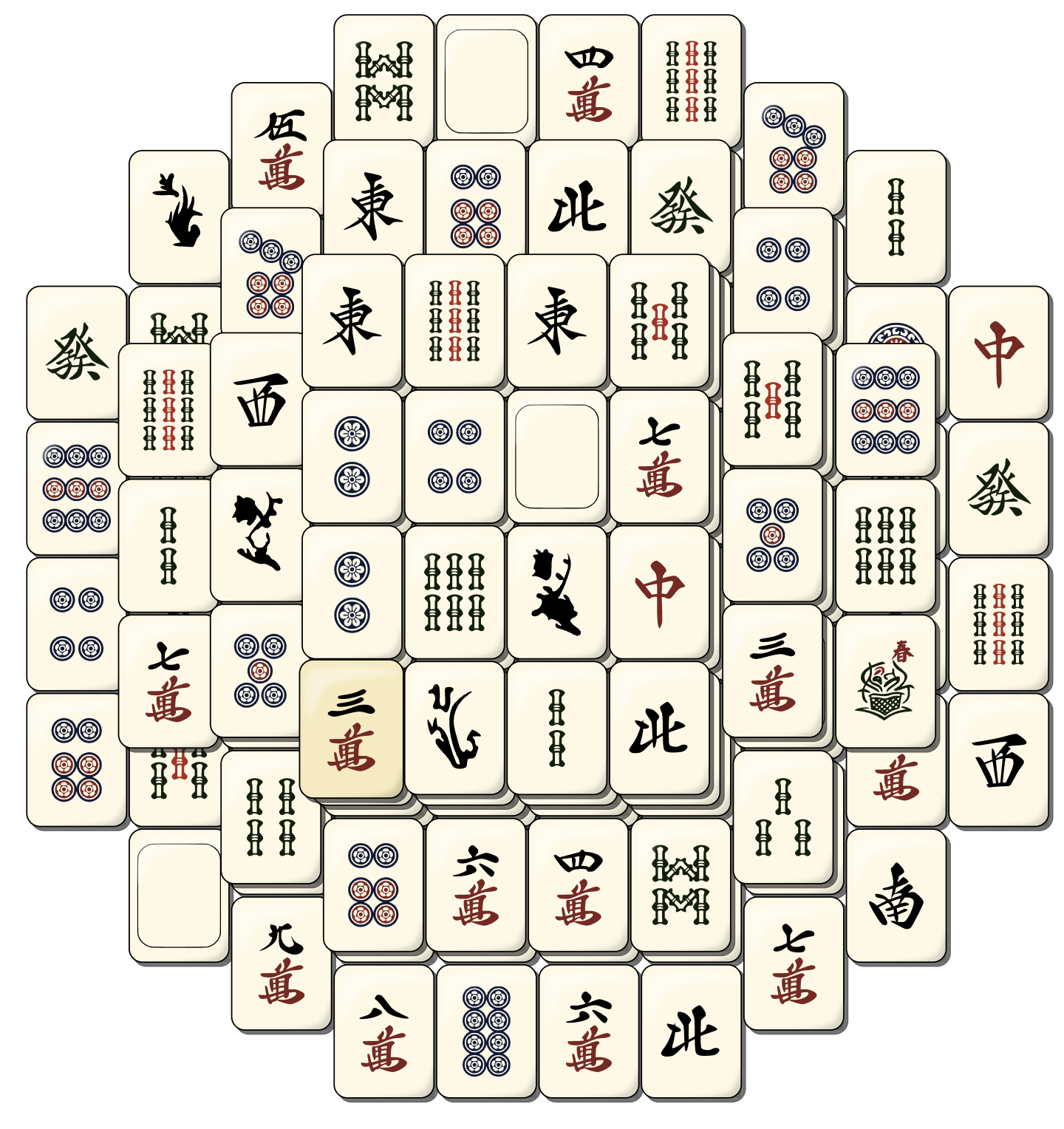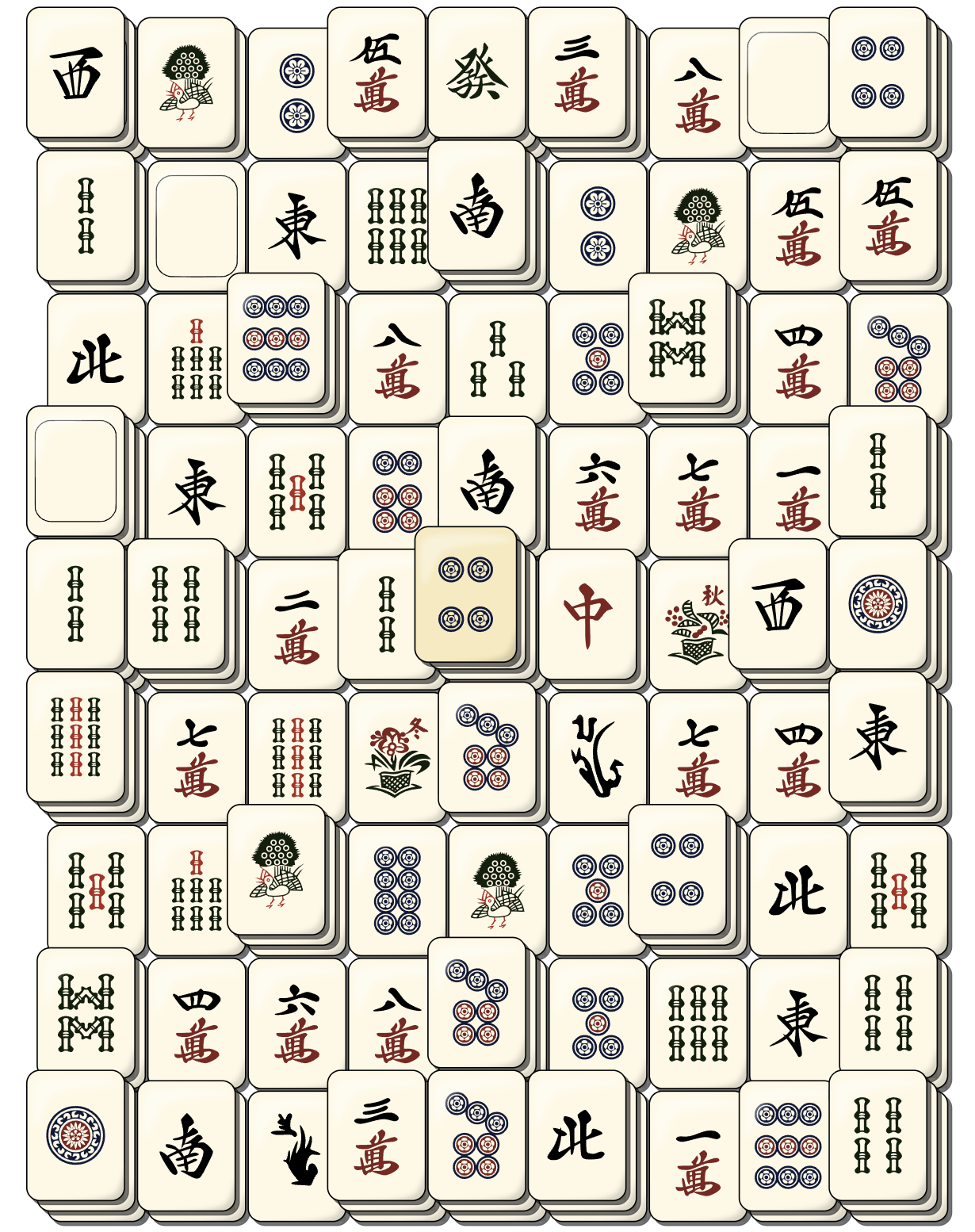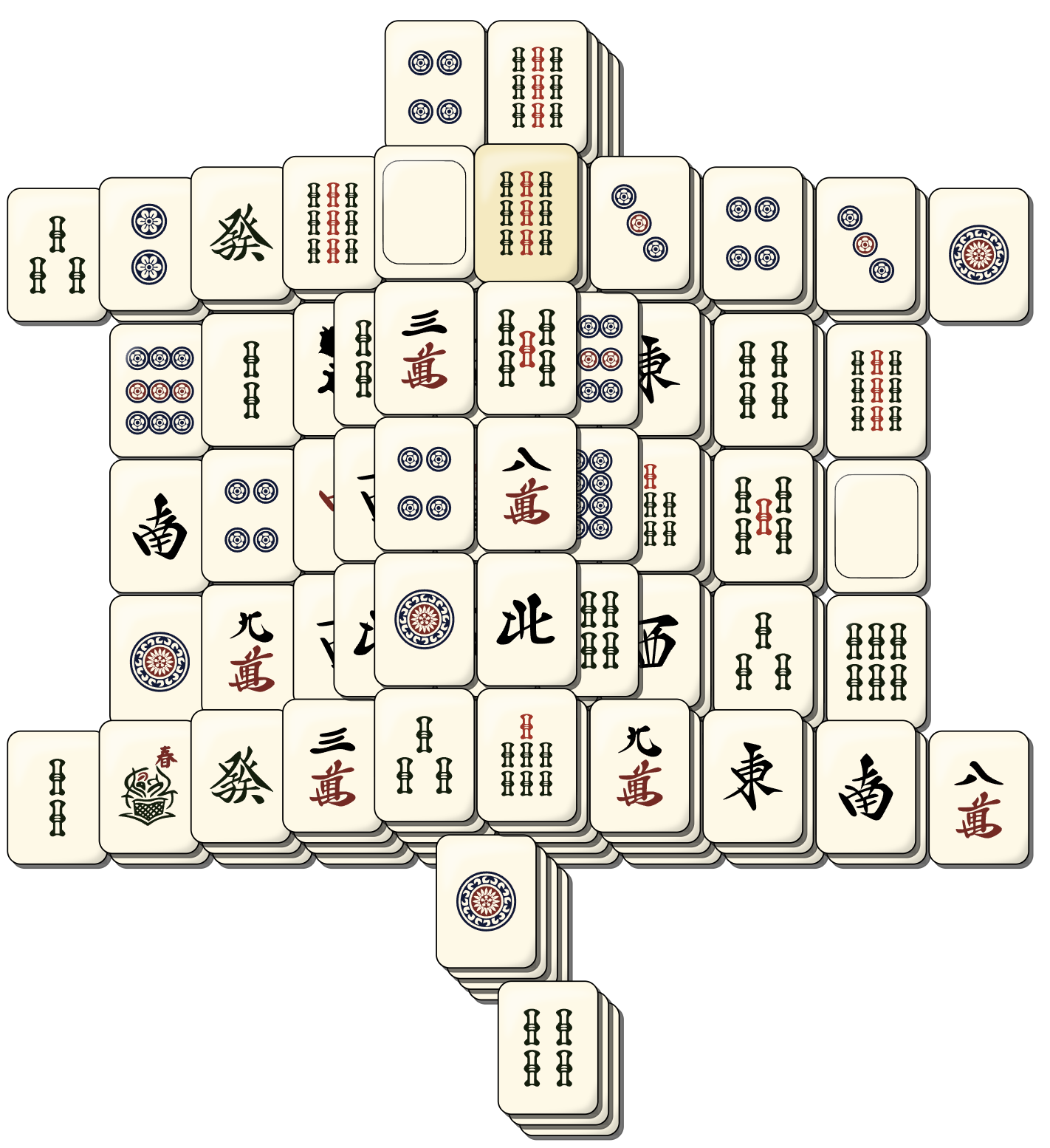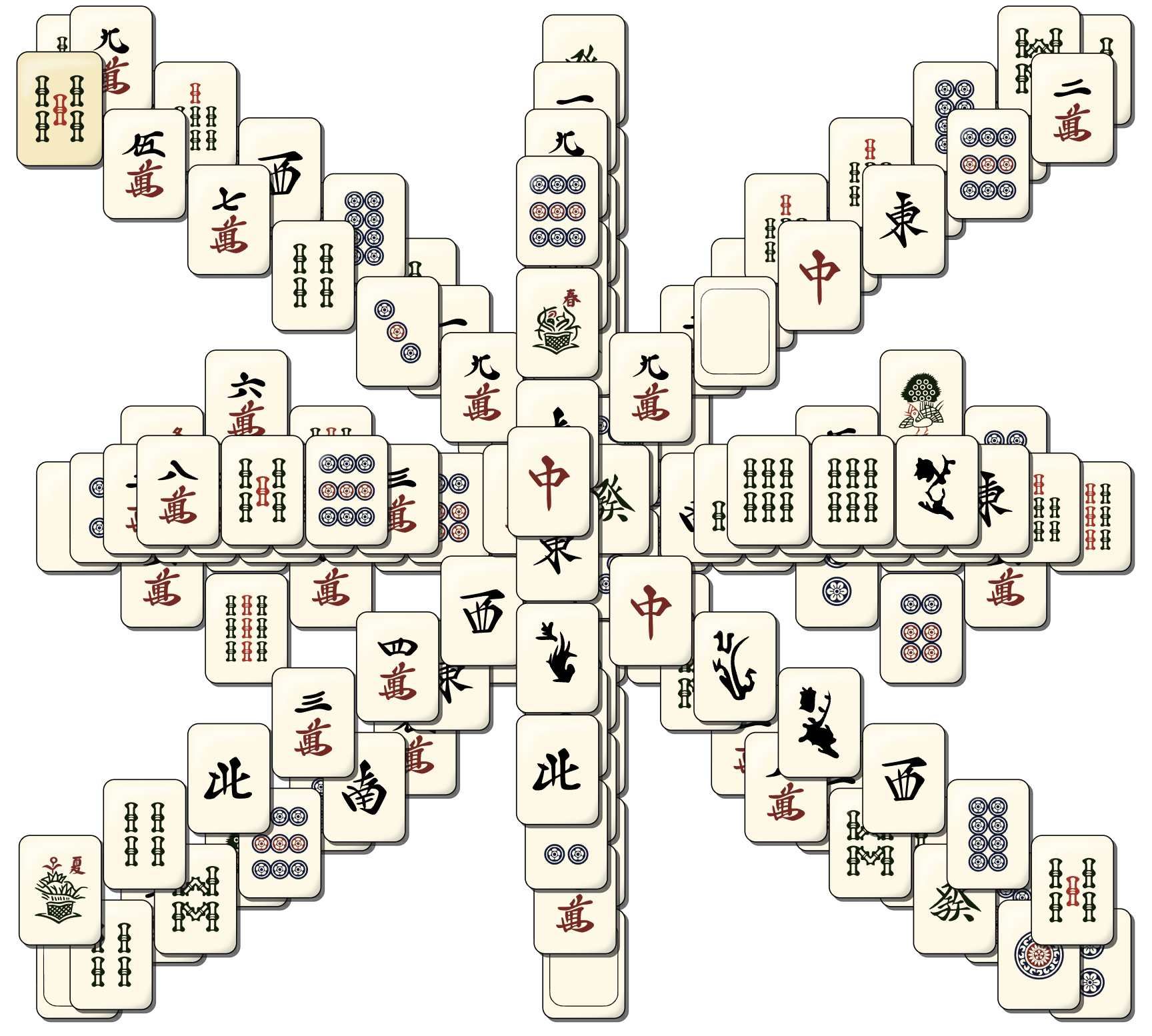Mahjong Solitaire Strategy Guide
Professional Techniques to Win Faster
Basic Strategies
Fundamental techniques every player should know
Strategy Example

Choose the best path from top-down perspective
Start from the Top
Always prioritize removing tiles from upper layers first. This frees up more tiles and gives you more options for future moves.
Example
If you have a choice between removing a tile on top or one at the bottom, choose the top one.
Why
Upper tiles block multiple tiles below, while lower tiles typically block fewer.
Pro Tip
Think of it like clearing a pile - removing from the top reveals everything underneath.
Strategy Example

Identify and remove matching tile pairs
Look for Obvious Matches First
Quickly identify and remove all obvious matching pairs before diving into complex planning.
Example
Scan the board for tiles that are clearly visible and have identical partners.
Why
This simplifies the board and makes it easier to spot strategic opportunities.
Pro Tip
Take 30 seconds to scan for all obvious matches before making your first move.
Strategy Example

Plan multiple move strategies
Plan Several Moves Ahead
Think about the consequences of each move before making it. Consider what tiles will be freed and what new options will appear.
Example
If you remove this pair, which tiles will become free? Will this help or hurt future moves?
Why
Hasty decisions can lead to dead ends where no moves are available.
Pro Tip
Try to visualize the board 2-3 moves ahead before making a choice.
Strategy Example

Identify key blocking tiles
Focus on Key Blocking Tiles
Identify tiles that are blocking many others and prioritize removing them.
Example
A tile that sits in the middle of the board, surrounded by 4-6 other tiles.
Why
Removing one blocking tile can free up multiple new matching opportunities.
Pro Tip
Count how many tiles each potential move would free - prioritize the highest count.
Advanced Techniques
Strategies for experienced players looking to improve their win rate
Board Analysis Methods
Learn to systematically analyze the current board state to identify optimal paths.
Key Techniques
- →Identify critical choke points where tiles bottleneck the board
- →Recognize patterns that commonly lead to dead ends
- →Assess the balance of remaining tile pairs
- →Spot potential "trap" tiles that should be saved
Layout-Specific Strategies
Different layouts require different approaches. Master the strategy for each type.
Turtle Layout
Work from outside in, focus on the "legs" first, save the "head" for later
Pyramid Layout
Start from the base corners, work systematically upward
Bridge Layout
Clear the supports first, then tackle the main bridge structure
Fortress Layout
Break through the walls in strategic points, work section by section
Shuffle Timing and Usage
Knowing when and how to use shuffle features effectively.
Expert Tips
- 💡Save shuffles for truly desperate situations with no available moves
- 💡Before shuffling, count remaining pairs to ensure the game is still winnable
- 💡Use partial shuffles if available to minimize disruption
- 💡Consider the shuffle cost/benefit ratio in timed games
Pattern Recognition
Develop an intuitive understanding of tile distribution and common patterns.
Skills to Develop
- 🎯Recognize when certain tile types are running low
- 🎯Identify symmetric patterns that can be solved efficiently
- 🎯Spot "paired" configurations that suggest optimal solving order
- 🎯Develop intuition for tile clustering tendencies
Expert-Level Strategies
Professional techniques for the most skilled players
Dead End Prevention
Learn to identify and avoid situations that lead to unwinnable board states.
⚠️ Warning Signs
- •Tiles becoming isolated with no matching partner remaining
- •Creating "islands" of tiles that cannot be reached
- •Unbalanced tile distribution leaving impossible matches
- •Blocking critical tiles too early in the game
✅ Prevention
- •Always keep track of remaining pairs for each tile type
- •Avoid creating isolated tile groups
- •Maintain multiple solving paths when possible
- •Reserve backup options when making risky moves
Optimization for Speed
Techniques for speed runs and time-competitive play.
⚡ Speed Techniques
- •Develop rapid pattern recognition through practice
- •Create a hierarchy of move priorities for quick decision making
- •Minimize time spent on complex calculations
- •Use peripheral vision to spot matches while planning next moves
🏃 Practice Methods
- •Regular timed practice sessions
- •Focus on one layout type until mastery
- •Record and analyze successful runs
- •Gradually increase complexity and speed requirements
Psychological Game Management
Maintaining optimal mental state during long or challenging games.
🧠 Mental Skills
- •Stay calm when board seems difficult - avoid panic moves
- •Take short breaks during extended sessions
- •Recognize when to continue vs when to restart
- •Manage frustration and maintain focus
📋 Routine
- •Pre-game mental preparation and goal setting
- •Consistent board scanning patterns
- •Regular progress assessment and adjustment
- •Post-game analysis and learning
Practice and Improvement
How to systematically improve your Mahjong Solitaire skills
